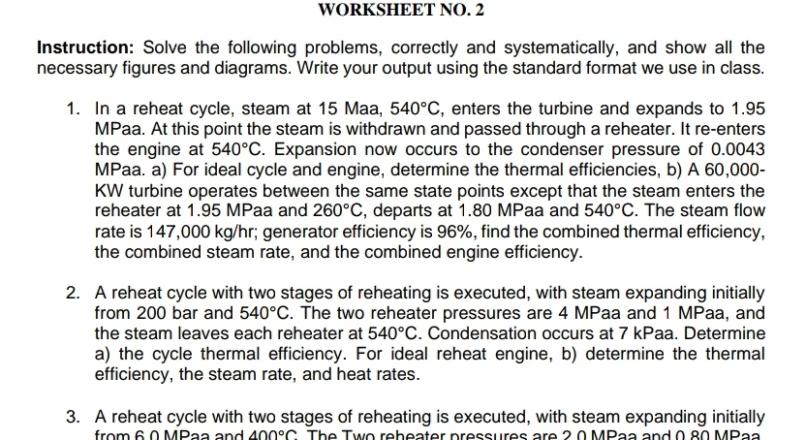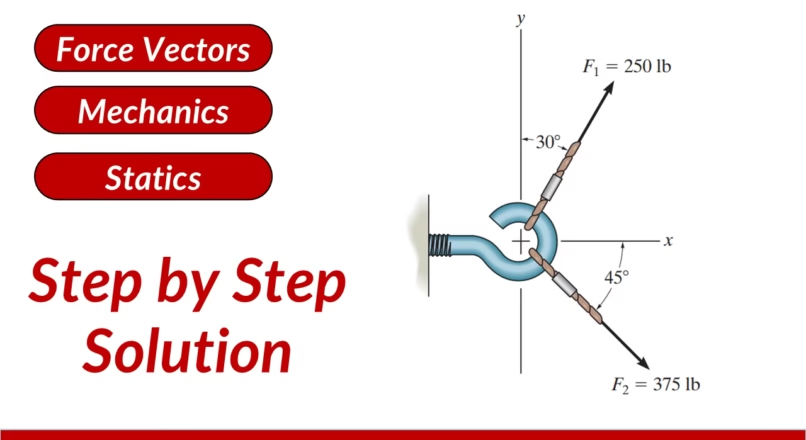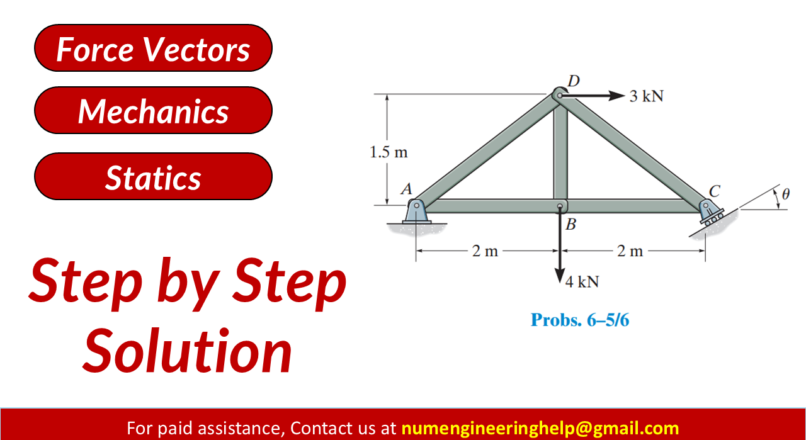$6–37.$ Determine the force in members $EF$, $BE$, $BC$ and $BF$ of the truss and state if these members are in tension or compression. Set ${P_1} = 9 kN, {P_2} = 12 kN$, and ${P_3} = 6 kN$
Continue reading
THERMODYNAMICS 2
1. In a reheat cycle, steam at 15 Maa, 540°C, enters the turbine and expands to 1.95 MPaa. At this point the steam is withdrawn and passed through a reheater. It re-enters the engine at 540°C. Expansion now occurs to ...
Continue reading
Resolve the force ${F_1}$ into components acting along the $u$ and $v$ axes and determine the magnitudes of the components.
Resolve the force ${F_1}$ into components acting along the $u$ and $v$ axes and determine the magnitudes of the components. Step by Step Solution We are given forces ${F_1} = 4;{rm{kN}}$, ...
Continue readingDetermine the magnitude of the resultant force $F_R = F_1 + F_2$ and its direction, measured clockwise from the positive $u$ axis.
Determine the magnitude of the resultant force $F_R = F_1 + F_2$ and its direction, measured clockwise from the positive $u$ axis. Step by Step Solution $ text{Step 1: Given Data} ...
Continue readingThe vertical force $F$ acts downward at $A$ on the two-membered frame. Determine the magnitudes of the two components of $F$ directed along the axes of $AB$ and $AC$. Set $F = 350 \, \text{N}$
The vertical force $F$ acts downward at $A$ on the two-membered frame. Determine the magnitudes of the two components of $F$ directed along the axes of $AB$ and $AC$. Set $F = 350 , text{N}$
Continue reading
The vertical force $F$ acts downward at $A$ on the two-membered frame. Determine the magnitudes of the two components of $F$ directed along the axes of $AB$ and $AC$.
The vertical force $F$ acts downward at $A$ on the two-membered frame. Determine the magnitudes of the two components of $F$ directed along the axes of $AB$ and $AC$. Set $F = 500 , text{N}$
Continue readingDetermine the magnitude of the resultant force $F_R = F_1 + F_2$ and its direction, measured counterclockwise from the positive $x$ axis.
Determine the magnitude of the resultant force $F_R = F_1 + F_2$ and its direction, measured counterclockwise from the positive $x$ axis.
Continue readingIf the magnitude of the resultant force is to be $500 \, \text{N}$, directed along the positive $y$ axis, determine the magnitude of force ${\bf F}$ and its direction $\theta$.
If the magnitude of the resultant force is to be $500 , text{N}$, directed along the positive $y$ axis, determine the magnitude of force ${bf F}$ and its direction $theta$.
Continue readingIf $\theta = 60^\circ$ and $F = 450 \, \text{N}$, determine the magnitude of the resultant force and its direction, measured counterclockwise from the positive $x$ axis.
If $theta = 60^circ$ and $F = 450 , text{N}$, determine the magnitude of the resultant force and its direction, measured counterclockwise from the positive $x$ axis.
Continue reading


